Ko Samet is a small island located in the eastern part of Thailand. This beautiful island is home to a wide variety of birds, including local as well as migrant species.
The island’s diverse habitats, including pristine beaches, mangroves, tropical rainforests, and scrublands provide a perfect sanctuary for these feathered creatures.
The charming birds of Ko Samet are a treat for birdwatchers and nature lovers who visit the island to explore its rich natural history. In this article, we will take a closer look at the fascinating world of birds in Ko Samet.
1. Lesser Whistling Duck
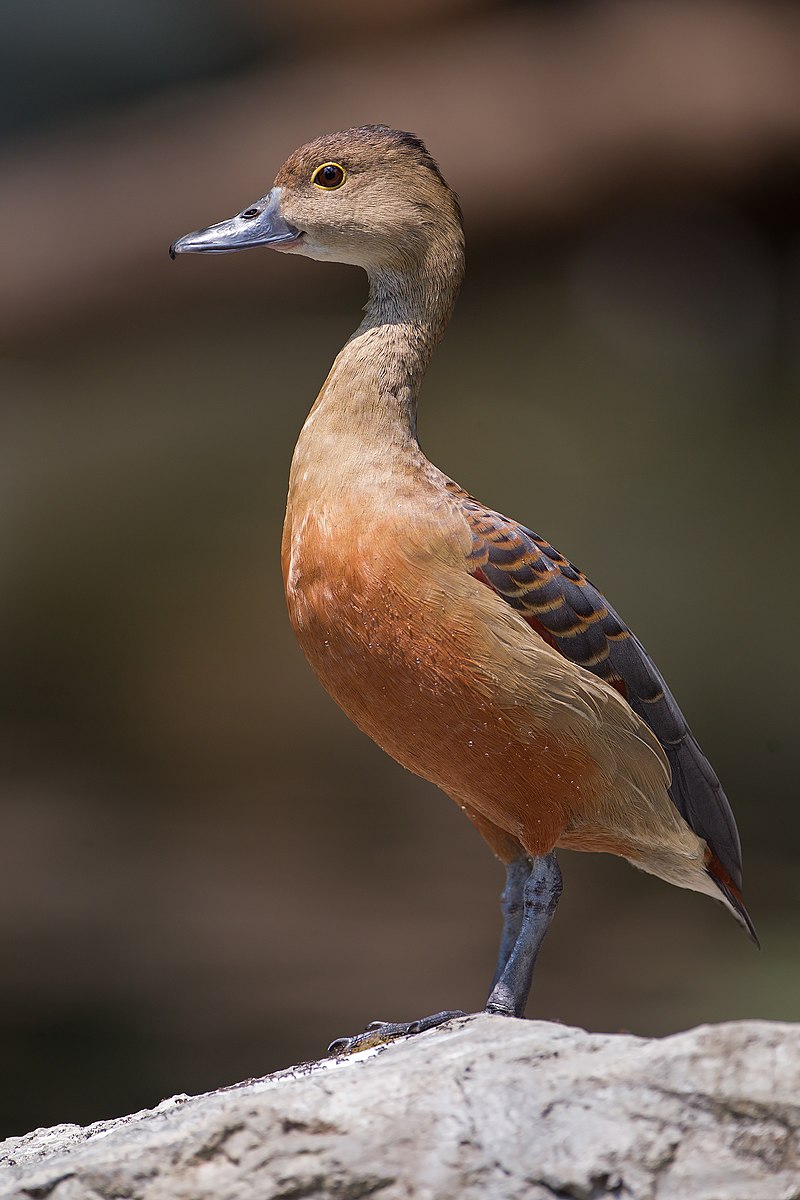
The Lesser Whistling Duck is a species of whistling duck found in the Indian subcontinent and Southeast Asia.
It has an unmistakable appearance, with its brown body, white-streaked wings and distinctive black tail feathers.
The adult ducks have red bills, eyes and legs with yellowish webbed feet for swimming.
They are generally nocturnal feeders but during the day they can be seen around lakes or wet paddy fields in flocks perching on trees or even building their nest inside tree hollows.
Their diet mainly consists of seeds from aquatic plants as well as small fish, mollusks and insects occasionally taken while wading or diving into water bodies to find food sources.Scientific classification:
| Kingdom | Animalia |
| Phylum | Chordata |
| Class | Aves |
| Order | Anseriformes |
| Family | Anatidae |
| Genus | Dendrocygna |
| Species | D. javanica |
Also Featured In: Most Common Birds in China, Common Birds in Kerala
2. Red-Wattled Lapwing
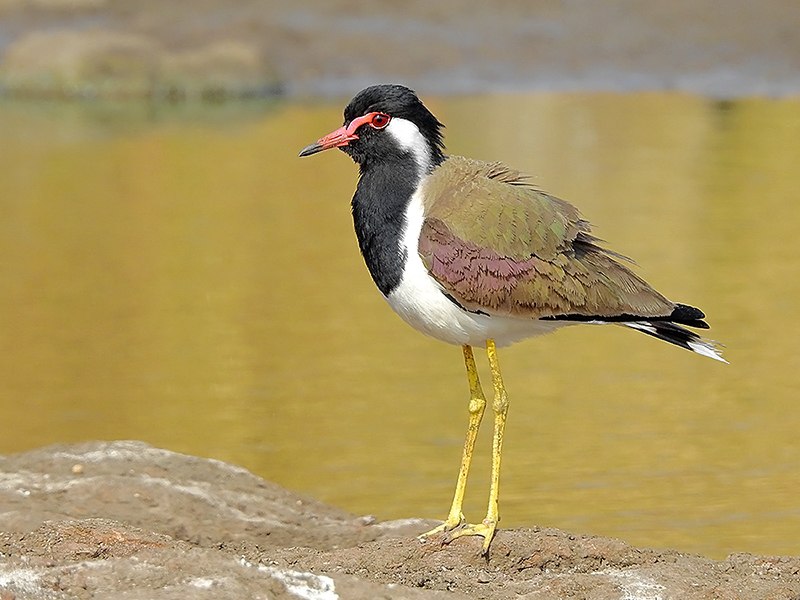
The Red-wattled Lapwing is an Asian bird belonging to the family Charadriidae. It has a distinctive loud call which led to it being nicknamed ‘did he do it’ by locals, due to its sound resembling the phrase.
These birds are usually found on open ground and cannot perch like other lapwings. They have black feathers with white wings, back and tail along with reddish wattles near their eyes that give them their name.
Red-wattled Lapwings feed mainly on insects but also eat some plant matter such as seeds or grains.
During breeding season they form strong pair bonds and make nests in shallow depressions of sand or soil lined with vegetation for incubating eggs during mating season before hatching out young chicks in around 25 days after laying eggs.Scientific classification:
| Kingdom | Animalia |
| Phylum | Chordata |
| Class | Aves |
| Order | Charadriiformes |
| Family | Charadriidae |
| Genus | Vanellus |
| Species | V. indicus |
Also Featured In: Common Birds in India, Common Birds that Live in Odisha
3. Spotted Dove
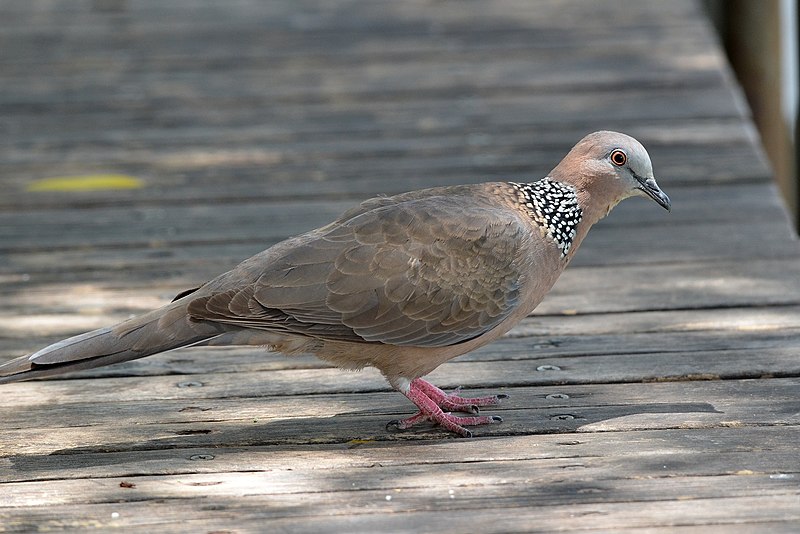
The Spotted Dove is a common species of pigeon found in the Indian subcontinent and Southeast Asia. It has an elegant, slender body with small head, long tail feathers and spotted wings.
Its coloring ranges from grey to brownish-grey on its upperparts with white underparts that are speckled black or dark grey. The male generally has more prominent spots than the female.
They feed mainly on seeds but will also consume insects when available during breeding season as well as berries, grains and fruits throughout their range.
These birds typically live in pairs or small groups near water sources such as ponds, rivers or streams where they can find food easily while staying safe from predators like cats and hawks.Scientific classification:
| Kingdom | Animalia |
| Phylum | Chordata |
| Class | Aves |
| Order | Columbiformes |
| Family | Columbidae |
| Genus | Spilopelia |
| Species | S. chinensis |
Also Featured In: Hawaii Big Island Birds You Should Know, Hong Kong Birds You Need to See
4. Oriental Magpie-Robin
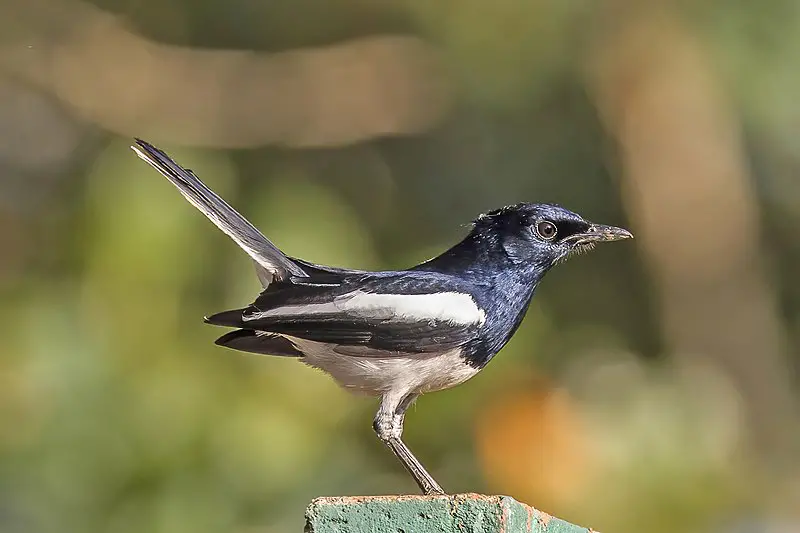
The Oriental magpie-robin is a beautiful passerine bird found across the Indian subcontinent and parts of Southeast Asia.
It can be easily identified by its black and white plumage, long tail that it holds upright while perched or foraging on the ground.
They are known to sing melodiously which makes them popular as cage birds in many countries.
These birds feed mainly on insects but also consume fruits, berries and nectar from flowers during certain times of the year.
Their population numbers have been declining due to destruction of their natural habitats like deforestation.
However, conservation efforts have seen some success in recent years with more areas being set aside for protection and preservation.Scientific classification:
| Kingdom | Animalia |
| Phylum | Chordata |
| Class | Aves |
| Order | Passeriformes |
| Family | Muscicapidae |
| Genus | Copsychus |
| Species | C. saularis |
Also Featured In: Most Common Types of Bangladeshi Birds, Black And White Birds You Don’t Know About
5. White-Bellied Sea Eagle
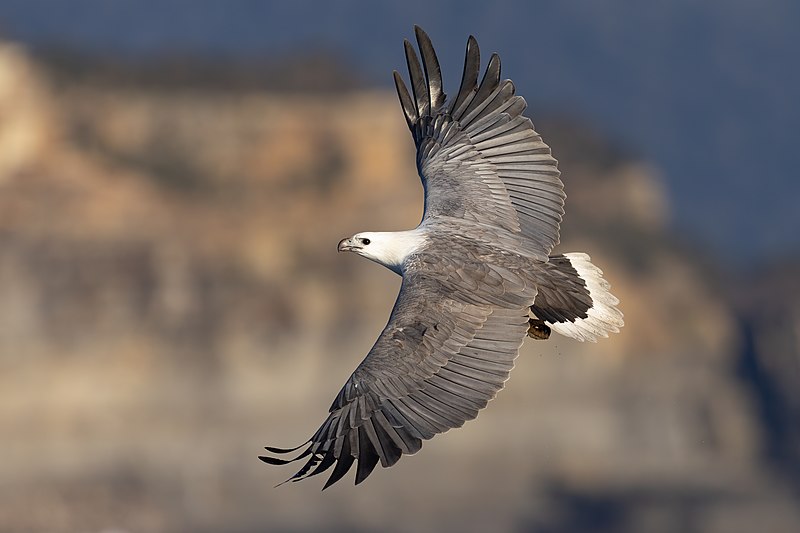
The White-bellied sea eagle is an impressive large bird of prey that belongs to the Accipitridae family.
It was first described by Johann Friedrich Gmelin in 1788 and it is closely related to Sanford’s sea eagle found in the Solomon Islands.
The adult white-bellied sea eagles have a stunning appearance with their white heads, dark brown bodies, and long wings which span up to 1.8 meters across.
They can be seen soaring above coastal areas searching for fish, reptiles or small birds as they hunt for food.
These majestic creatures are also known for being incredibly vocal when nesting – making loud cackling noises at dawn and dusk near riverside forests.Scientific classification:
| Kingdom | Animalia |
| Phylum | Chordata |
| Class | Aves |
| Order | Accipitriformes |
| Family | Accipitridae |
| Genus | Haliaeetus |
| Species | H. leucogaster |
Also Featured In: South Australian Birds, Birds of Tasmania
6. Coppersmith Barbet
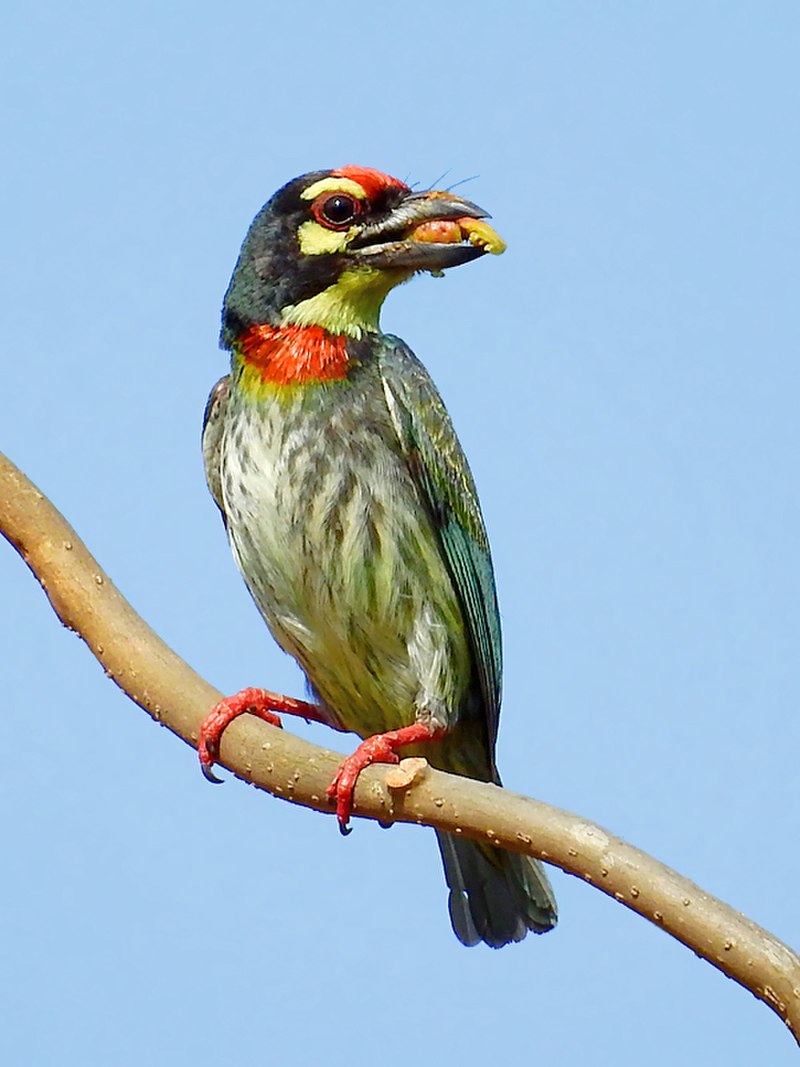
The Coppersmith barbet is an attractive Asian bird, easily recognizable by its bright crimson forehead and throat.
It has a call that sounds like a coppersmith striking metal with a hammer – hence its name.
These birds are found in the Indian subcontinent and parts of Southeast Asia where they build their nests inside trees, carving out holes for themselves.
They can often be seen perched high up on trees or wires during the day as they feed on fruit from nearby branches.
The vibrant colors of these birds make them stand out amongst other species in their habitat.Scientific classification:
| Kingdom | Animalia |
| Phylum | Chordata |
| Class | Aves |
| Order | Piciformes |
| Family | Megalaimidae |
| Genus | Psilopogon |
| Species | P. haemacephalus |
Also Featured In: Birds That Live in the Jungle, Birds that Live in Tamil Nadu
7. Brahminy Kite
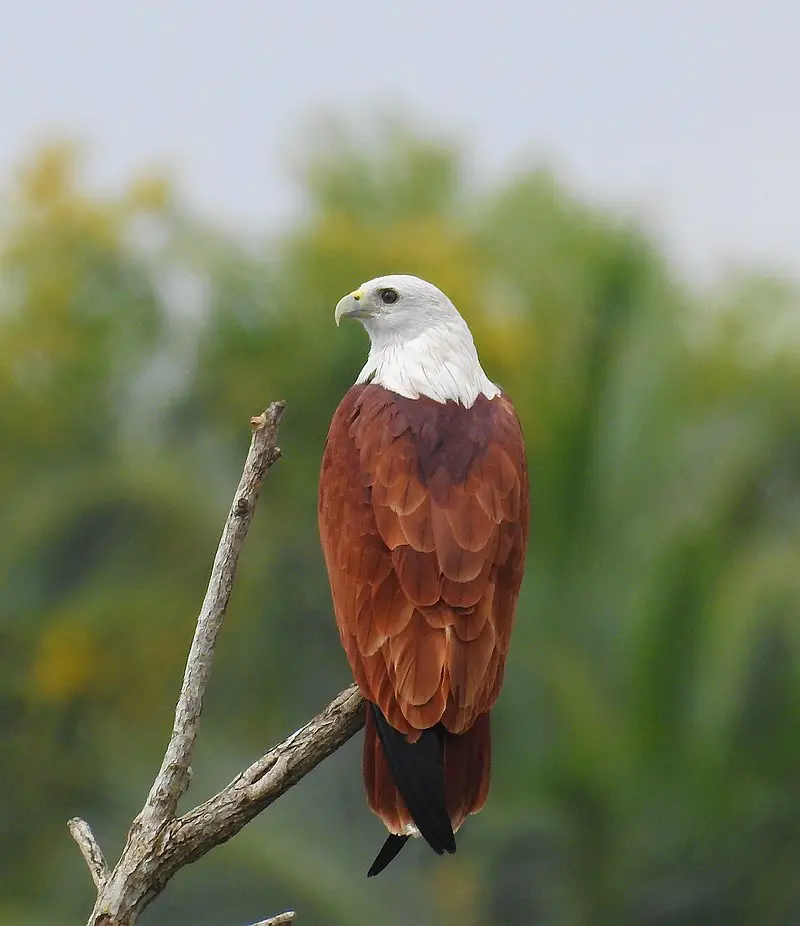
The Brahminy Kite is a majestic bird of prey native to the Indian subcontinent, Southeast Asia and Australia. It was formerly known as the red-backed sea eagle in Australia.
This medium-sized raptor has a distinctive white head with rufous brown feathers covering its body, making it easily recognisable from far away. The wingspan can reach up to 5 feet wide.
Brahminy kites are found mainly on coasts and inland wetlands where they feed mostly on dead fish or carrion left by other animals.
They also hunt for small mammals such as rodents or reptiles like lizards and snakes during dry spells when food sources become scarce.
These birds have adapted well over time and will even scavenge for food near picnic sites or urban areas if need be.
Overall these beautiful creatures are an important part of their local ecosystems which rely heavily upon them for keeping animal populations balanced through natural predation methods instead of manmade ones; this ensures that nature remains healthy so future generations may enjoy it too.Scientific classification:
| Kingdom | Animalia |
| Phylum | Chordata |
| Class | Aves |
| Order | Accipitriformes |
| Family | Accipitridae |
| Genus | Haliastur |
| Species | H. indus |
Also Featured In: Birds that Live around Brisbane, Birds that Charles Darwin Studied
8. Olive-Backed Sunbird
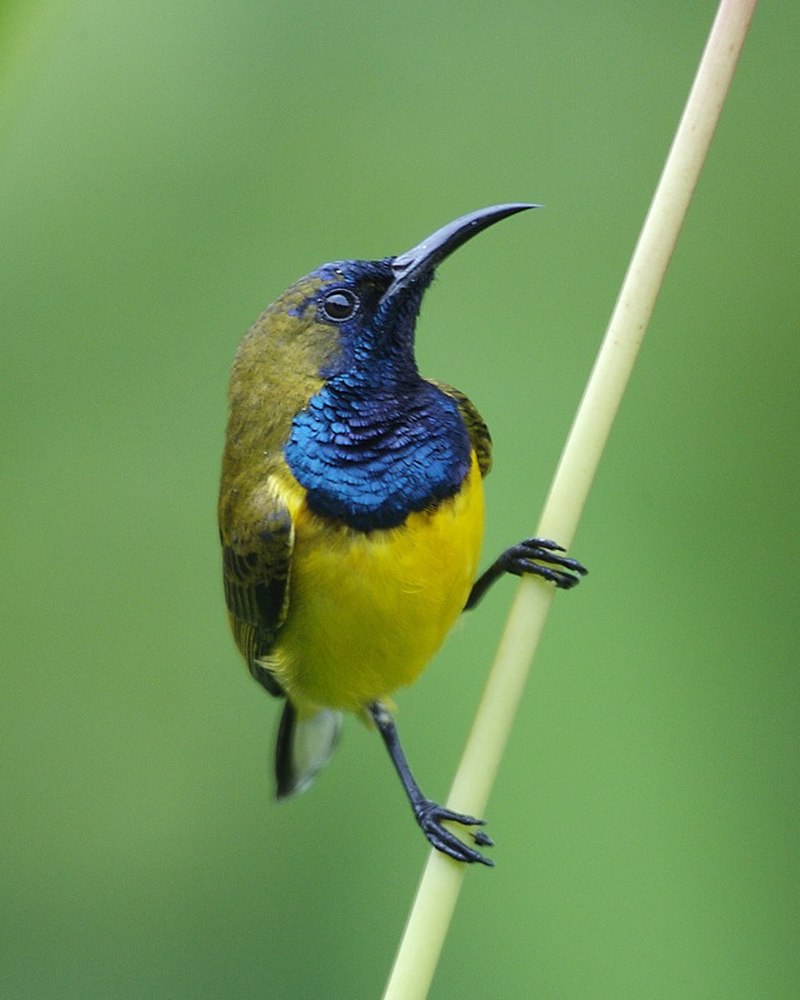
The Olive-backed Sunbird is a vibrant species of sunbird found in Southern Asia and Australia. Its striking yellow underbelly complements its olive upperparts, making it an attractive sight to behold.
First described by Mathurin Jacques Brisson in 1760 based on a specimen from the Philippines, this small songbird loves nectar but will also feed on insects as well as other tiny invertebrates.
It feeds mainly while hovering or perching with its bill pointing downwards – quite an impressive feat.
This bird has adapted to both forested areas and urban gardens meaning they can be seen all over their range.
With conservation efforts in place for this beautiful creature we are sure that the Olive-backed Sunbird will continue to bring joy to our lives for many years yet.Scientific classification:
| Kingdom | Animalia |
| Phylum | Chordata |
| Class | Aves |
| Order | Passeriformes |
| Family | Nectariniidae |
| Genus | Cinnyris |
| Species | C. jugularis |
Also Featured In: Birds of the Philippines, Common Philippines Birds
9. Yellow-Vented Bulbul
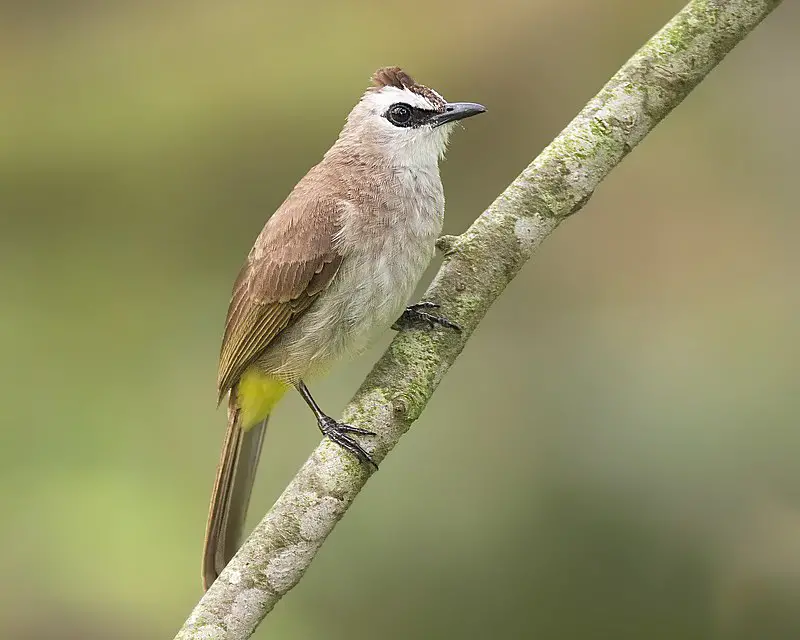
The Yellow-vented Bulbul is a stunning passerine bird from southeastern Asia, with its bright yellow and black plumage. It breeds in open habitats such as cultivated areas, but rarely enters deep forests.
They tend to be nomadic, wandering around and searching for food sources. During the breeding season they form pairs and build their nests at least two metres above ground level in trees or shrubs.
The female lays 2–4 eggs which are incubated by both parents over 13–14 days before hatching into chicks that fledge after 16–17 days of nestling stage..
These birds feed mainly on fruits or berries found in gardens or fields; insects like caterpillars may also make up part of their diet.
As beautiful as it looks, this species has a loud call which can become quite irritating if heard frequently.Scientific classification:
| Kingdom | Animalia |
| Phylum | Chordata |
| Class | Aves |
| Order | Passeriformes |
| Family | Pycnonotidae |
| Genus | Pycnonotus |
| Species | P. goiavier |
Also Featured In: Native Birds Of Ko Chang District, Ko Mak Birds You Didn’t Know
10. Cattle Egret
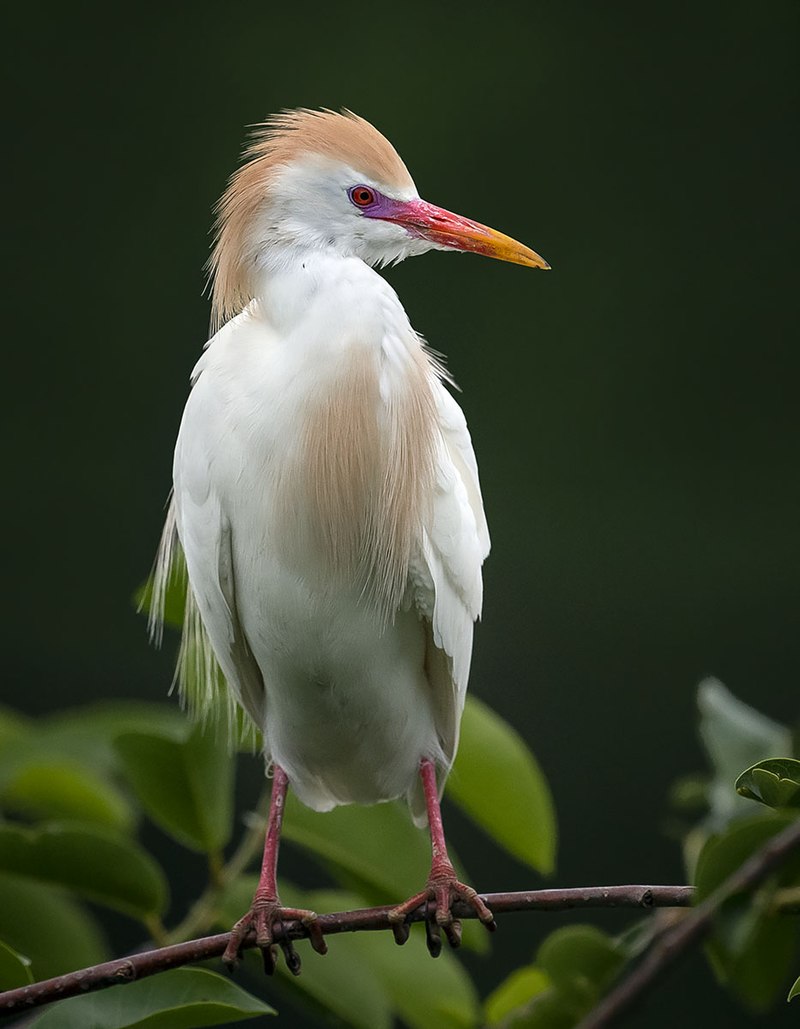
The Cattle Egret is a heron of the family Ardeidae found around the world in tropical, subtropical and warm temperate areas. It has two subspecies: western cattle egret and eastern cattle egret.
They have white plumage with buff plumes on their head, neck and back. The beak is yellowish-orange with black tip while legs are orange or yellow coloured depending on species variation.
This bird usually feeds near large herds of animals such as cows, horses etc., where it finds plenty of insects to eat like grasshoppers, crickets etc..
Its presence benefits these animals by removing ectoparasites from them which leads to healthier livestock population.
It nests colonially in trees or shrubs located close to water bodies during breeding season which generally takes place between March-June every year.Scientific classification:
| Kingdom | Animalia |
| Phylum | Chordata |
| Class | Aves |
| Order | Pelecaniformes |
| Family | Ardeidae |
| Genus | Bubulcus Bonaparte, 1855 |
| Species | B. ibis |
Also Featured In: Egyptian Birds, Water Birds Live around Us
11. Ayeyarwady Bulbul
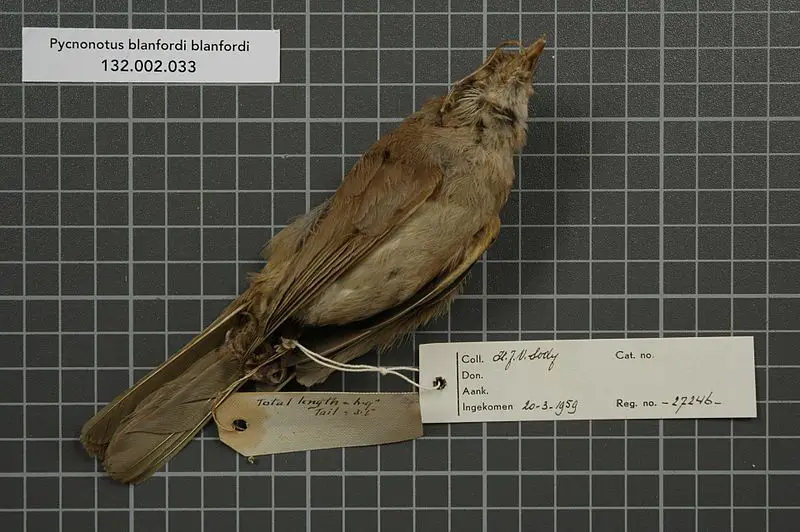
The Ayeyarwady bulbul is a species of passerine bird that belongs to the family of bulbuls. It is endemic to Myanmar and inhabits subtropical or tropical moist lowland forests.
This colorful bird has white, yellowish-white and black plumage on its body with an orange bill and two distinctive white stripes behind each eye.
Until 2016, it was believed to be conspecific with another type called the streak-eared bulbul which is now considered as a separate species known as Pycnonotus conradi.
Although relatively unknown beyond its native range, this beautiful bird can make an excellent pet due to its friendly demeanor towards humans when tamed properly over timeScientific classification:
| Kingdom | Animalia |
| Phylum | Chordata |
| Class | Aves |
| Order | Passeriformes |
| Family | Pycnonotidae |
| Genus | Pycnonotus |
| Species | P. blanfordi |
Also Featured In: Birds of Myanmar,
12. Red-Whiskered Bulbul
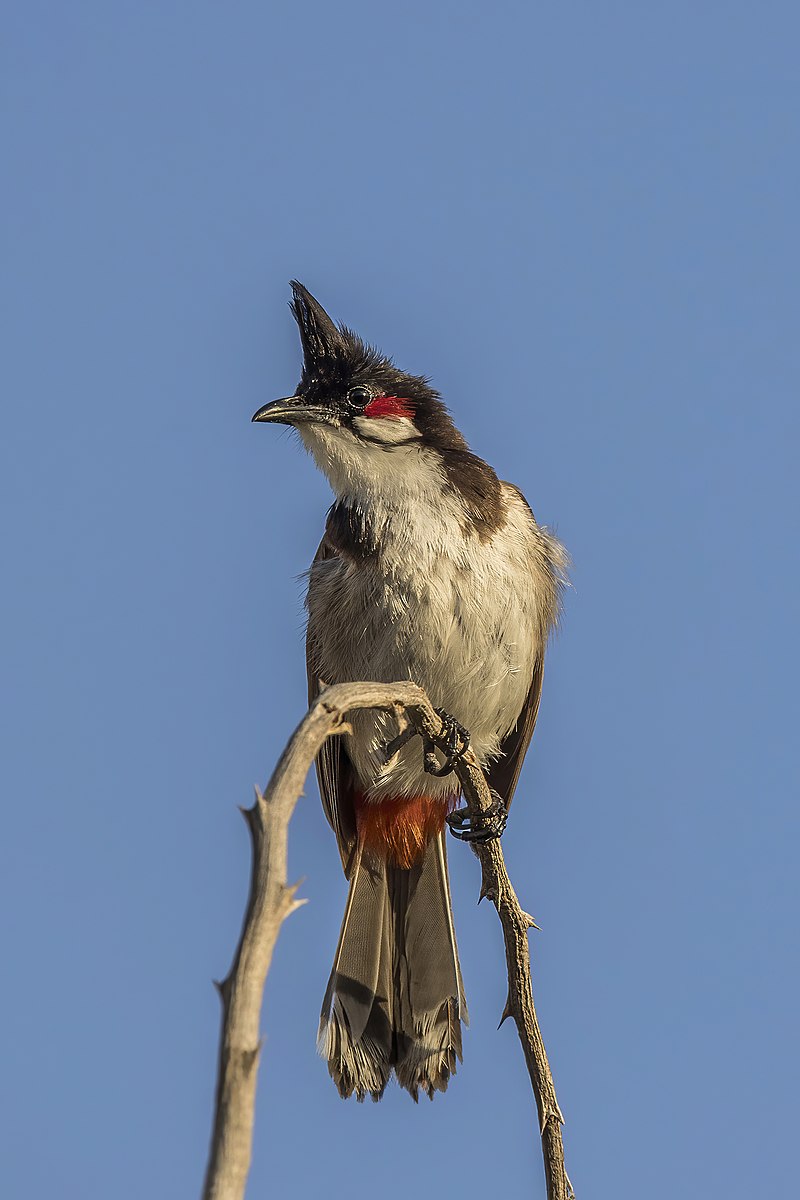
The Red-whiskered Bulbul is a passerine bird native to tropical Asia. It has an unmistakable black head, white cheek patch, and red whiskers on each side of its beak.
This brightly colored bulbul feeds mainly on fruits but also eats small insects from time to time.
The birds are known for their loud call which consists of three or four notes in succession and can often be heard emanating from treetops or other high perches where it likes to sit conspicuously.
Introductions have been made in many parts of the world outside its original range, with populations establishing themselves successfully in various locations including Hawaii and Florida within the United States.Scientific classification:
| Kingdom | Animalia |
| Phylum | Chordata |
| Class | Aves |
| Order | Passeriformes |
| Family | Pycnonotidae |
| Genus | Pycnonotus |
| Species | P. jocosus |
Also Featured In: Common Birds of Mumbai, Birds that You’ll Find in Kolkata
13. Eurasian Whimbrel
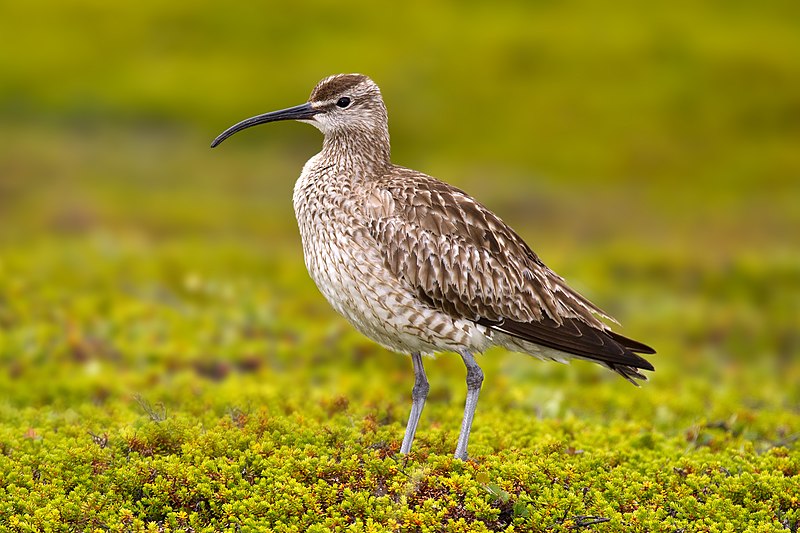
Eurasian Whimbrels are a species of wading bird commonly found in subarctic regions of Europe and Asia.
They have white rumps, long curved bills, brown wings and backs with light streaking on the lower breast.
These birds feed mainly on crustaceans, mollusks or worms they find while probing in the mud during low tide.
During breeding season they can be seen nesting near coastal areas or wetlands where food is plentiful.
This species has recently been split from Hudsonian whimbrels but some authorities still consider them to be one species due to their similarities which includes migration patterns as well as habitat preferences.
Eurasian whimbrels are an important part of many ecosystems because they help control insect populations by eating larvae before it can cause damage to crops or vegetation nearby.Scientific classification:
| Kingdom | Animalia |
| Phylum | Chordata |
| Class | Aves |
| Order | Charadriiformes |
| Family | Scolopacidae |
| Genus | Numenius |
| Species | N. phaeopus |
Also Featured In: Singapore Birds, Galapagos Birds You Should Know
14. Black-Naped Monarch
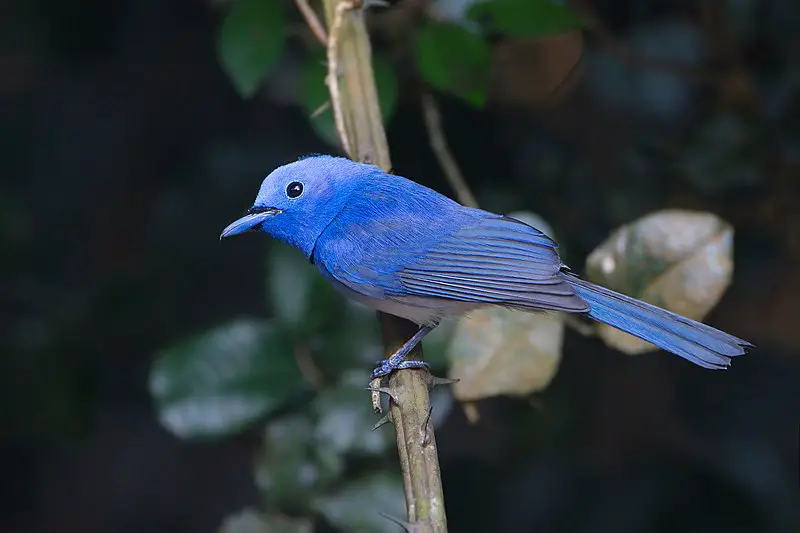
The Black-naped Monarch is a beautiful and agile passerine bird native to Southern and South East Asia.
With its distinct black patch on the back of it’s head, this small but strong species stands out among other birds in the area.
The male has vibrant blue plumage with an elegant narrow black half collar (“necklace”) which makes him even more attractive.
Females are comparatively duller with olive brown wings and light yellowish underparts which helps them blend into their environment better for camouflage purposes.
These birds feed mainly on insects, spiders and fruits making them beneficial as they help reduce pests while also providing nutrients to local vegetation by dispersing seeds from fruit consumption.Scientific classification:
| Kingdom | Animalia |
| Phylum | Chordata |
| Class | Aves |
| Order | Passeriformes |
| Family | Monarchidae |
| Genus | Hypothymis |
| Species | H. azurea |
Also Featured In: Most Common Taiwan Birds, Gujarati Birds
15. Javan Pond Heron
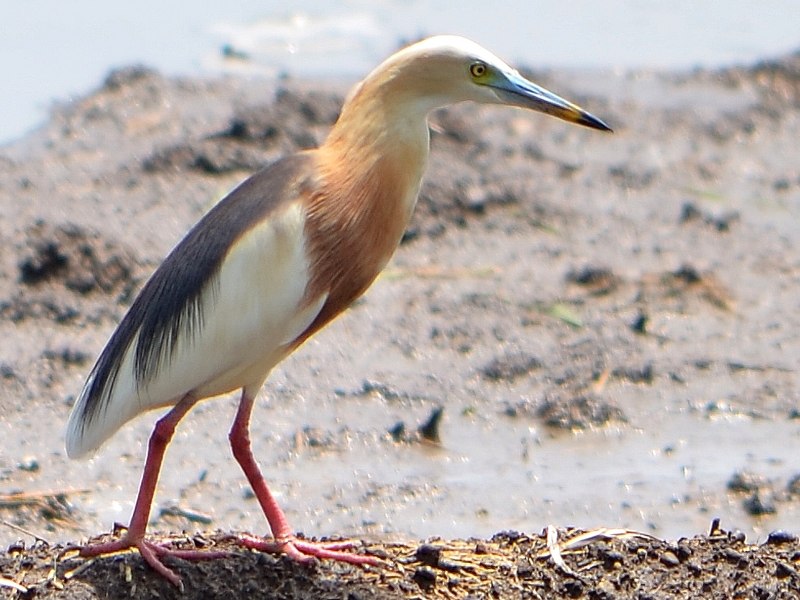
The Javan Pond Heron is a beautiful wading bird that can be found in shallow fresh and salt-water wetlands of Southeast Asia.
It has an overall orange, slaty and white colouring during mating season with yellow bill, black tip on its bill and yellow eyes.
Its length typically measures 45 cm long with white wings. The heron’s diet consists mainly of insects, fish, crabs as well as any other small creatures it may find along the shoreline or water bed where they live.
These birds are usually solitary but can also sometimes gather in groups to hunt for food at dusk when their prey are more active.
They use their keen vision to spot potential prey before quickly darting forward to catch them using their sharp bills.Scientific classification:
| Kingdom | Animalia |
| Phylum | Chordata |
| Class | Aves |
| Order | Pelecaniformes |
| Family | Ardeidae |
| Genus | Ardeola |
| Species | A. speciosa |
Also Featured In: Herons Species, Birds that Commonly Found in Bali
16. Greater Racket-Tailed Drongo
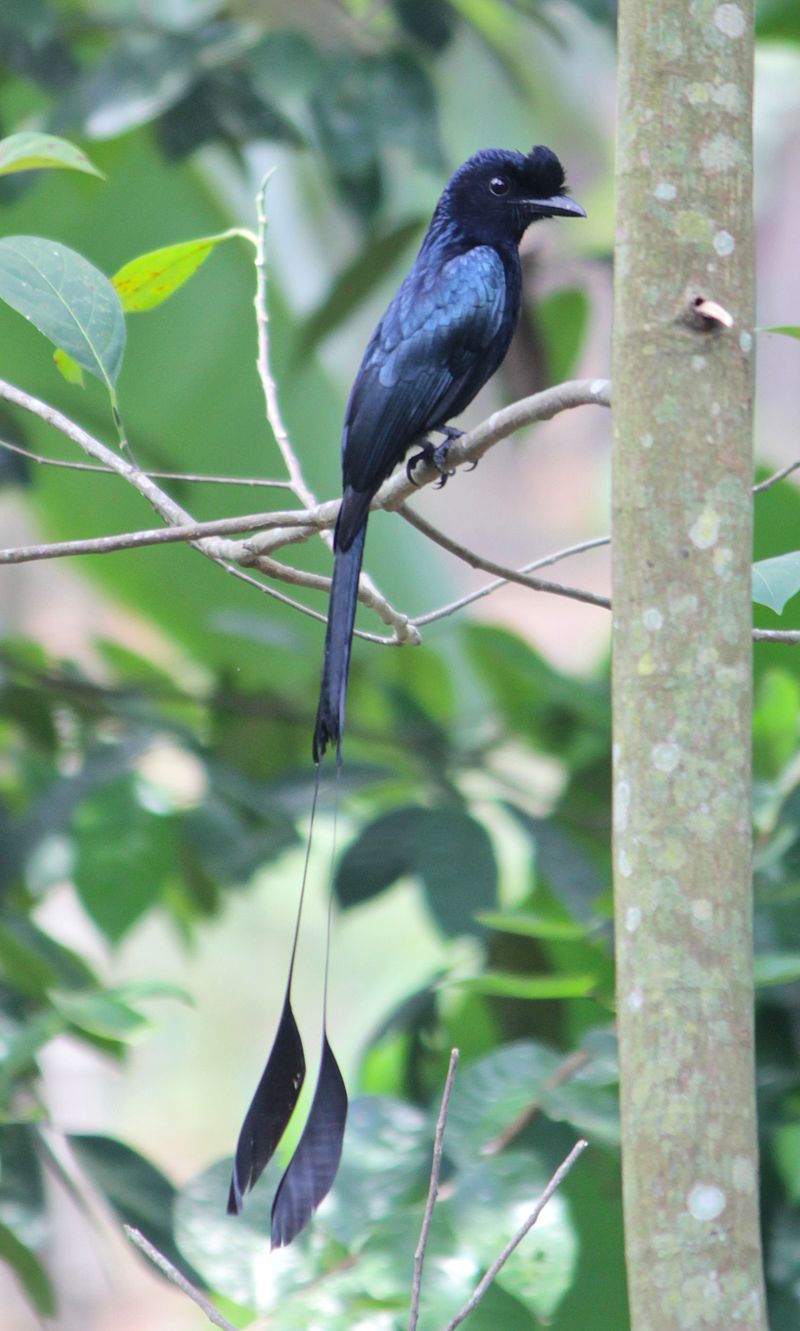
The Greater racket-tailed drongo is a medium-sized bird that inhabits forests in Asia. This bird is easily recognized by its elongated outer tail feathers which have webbing only at the tips.
The Greater racket-tailed drongo is part of the Dicruridae family, which also includes other types of drongos.
They are known for their conspicuous nature, often perching out in the open and using a variety of loud calls that include perfect mimicry of other birds and animals.
They are skilled at attracting attention, and can be seen flashing their long tails to intimidate predators or attract mates.
The Greater racket-tailed drongo is an important member of its ecosystem, helping to control insect populations and acting as a key prey species for predators.
Overall, this bird is a fascinating and important species of the Asian forests it inhabits.Scientific classification:
| Kingdom | Animalia |
| Phylum | Chordata |
| Class | Aves |
| Order | Passeriformes |
| Family | Dicruridae |
| Genus | Dicrurus |
| Species | D. paradiseus |
Also Featured In: Birds of Goa, Endemic Sri Lanka Birds
17. Yellow-Browed Warbler
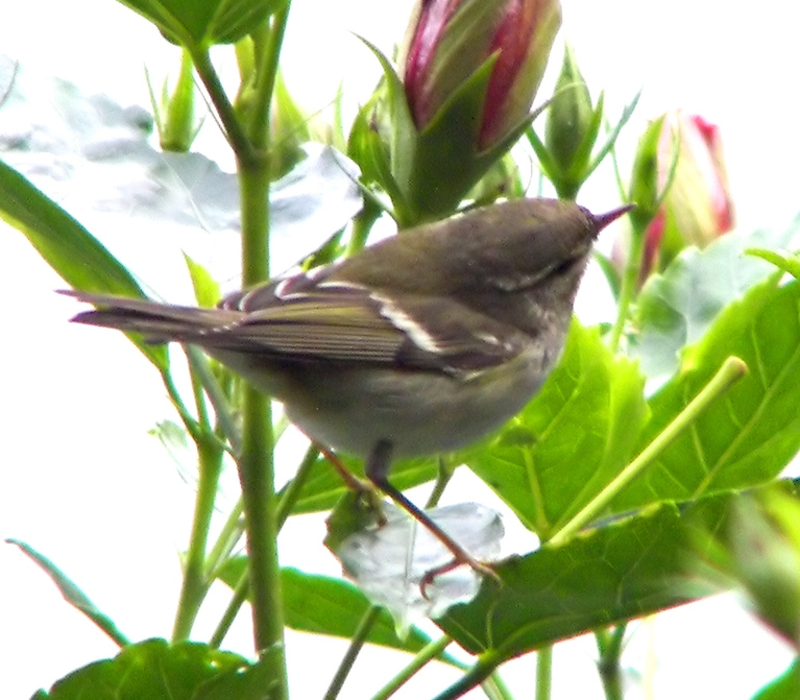
The Yellow-browed warbler is a migratory bird that breeds in eastern Palearctic and winters in South and Southeast Asia. It can also be found in small numbers in western Europe during winter.
This warbler belongs to the Phylloscopidae family and was once included in the Old World warbler group. The Yellow-browed warbler is a leaf warbler and has a distinct yellow eyebrow. It is an active bird and is known for its distinctive call.
The habitat of this bird includes coniferous and deciduous forests. These birds are known to be quite adaptable and can survive in a wide range of environments.
Despite their small size, they can cover large distances during migration, traveling thousands of miles.
Overall, the Yellow-browed warbler is a fascinating bird that is highly adaptable and capable of long-distance flight.Scientific classification:
| Kingdom | Animalia |
| Phylum | Chordata |
| Class | Aves |
| Order | Passeriformes |
| Family | Phylloscopidae |
| Genus | Phylloscopus |
| Species | P. inornatus |
Also Featured In: Fuerteventura Island Birds You Need to See, Most Common Birds of Ko Samui